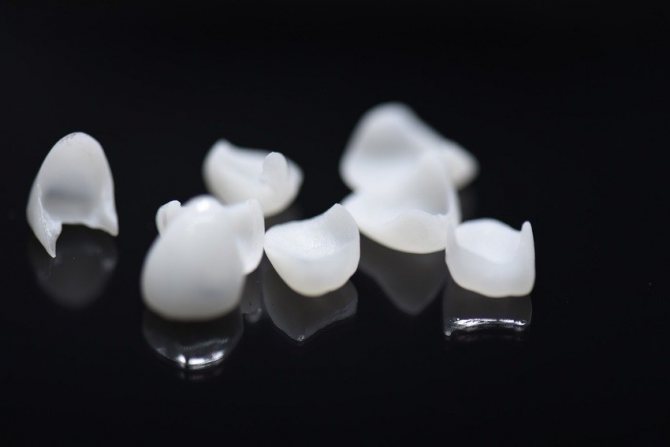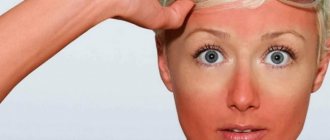Rehabilitation after wisdom teeth removal: rules of care.
Wisdom teeth removal is one of the most common procedures performed in the dental surgeon's chair. This is a complex group of teeth, and often treatment and, especially, removal are difficult, and the rehabilitation period can last several weeks. But proper oral care, as well as following the dentist’s recommendations, can reduce this time. MedAboutMe will tell you about the features of rehabilitation after wisdom teeth removal and the rules of care.
Rehabilitation
Rehabilitation is a set of measures aimed at restoring or compensating for lost functions as a result of injury or illness. Removing a wisdom tooth is often difficult or even atypical and requires a whole range of measures to restore the patient and return him to his usual lifestyle.
Most modern dentists recommend suturing the edges of the socket after extraction, which is necessary to speed up healing and also prevent complications. Improvement in condition after wisdom tooth removal is gradual. Pain and swelling are the main symptoms that worry patients during the rehabilitation period, but their manifestation subsides every day.
The entire healing process of an extracted tooth socket takes place in several stages:
- a few minutes after surgery - the formation of a blood clot;
- within 2-3 days the swelling should completely disappear;
- on the 7th day after surgery, the dentist removes the sutures;
- 7-10 - complete disappearance of pain;
- 14 days - complete recovery: the mouth opens fully, there are no unpleasant sensations, a mucous hood begins to form at the site of the extracted tooth.
These are the main stages of recovery after tooth extraction. But if complications arise in the form of inflammation or infection, then this period may drag on and take about 2-4 weeks.
First meal and diet
The first question that arises in a person after surgery is when can you eat and drink? During a normal extraction, you should not eat for 2–3 hours; during a complex extraction, you should not eat for 4–6 hours. If you are prone to bleeding, your doctor will prescribe a 12-hour fast. To prevent blood clot dislodgment and dry socket formation, it is recommended to drink still water 1–2 hours after surgery.
Alcohol is prohibited for 7–10 days. It is incompatible with many medications taken by the patient, and alcohol thins the blood, which increases bleeding.
In nutrition, the patient should follow general recommendations:
- It is better to bring ready-made dishes to the consistency of porridge or puree;
- food temperature should not exceed 41°C;
- It is not recommended to chew on the side where the tooth was removed;
- Eating cold food, especially ice cream, is not allowed.
The diet excludes any irritating foods: smoked, spicy, pickled and salty foods. Drinks must be warm; you cannot drink water from a bottle or tea through a straw. As fluid is drawn in, a vacuum is created in the mouth, which can push out a blood clot.
| First day | Breakfast | Oatmeal or buckwheat porridge with milk, warm tea. |
| Dinner | Pea or mashed potatoes with pieces of vegetables, cream of mushroom soup, berry compote. | |
| Dinner | Cottage cheese with sugar, a glass of yogurt. | |
| Second day | Breakfast | Porridge with milk, baked apple. |
| Dinner | Pasta, steamed fish or chicken cutlet, tea or coffee with milk. | |
| Dinner | Vegetable or fruit salad. | |
| 3–4 days | Breakfast | Cereal porridge with berries and fruits, yogurt, tea. |
| Dinner | Chicken soup, vegetable stew with steamed pork cutlet, compote. | |
| Dinner | Mashed potatoes with baked fish, vegetable salad, a glass of kefir. |
On the fifth day, you are allowed to switch to your usual diet if no complications are observed. Raw carrots, apples, pears and other solid foods should be added to the menu only after 7-10 days. You will have to give up sparkling water and strong coffee for a while.
Babies' first teeth usually erupt at 7-8 months of age, although they can appear at 6 months or 9-12 months. This process is accompanied by pain and itching.
During teething, there is increased salivation, causing irritation around the mouth. Therefore, it is necessary to regularly wipe the baby’s face using a soft cloth.
To prevent infection and inflammatory processes, the child is given only clean objects, as he puts them in his mouth.
Gum massage will help speed up teething, relieve pain and itching. The massage (it should be gentle) is done with a clean finger wrapped in a bandage.
After teething, brushing should begin. Children under one and a half years old have their teeth brushed once a day. It is better to carry out the procedure with a silicone brush, which the mother places on her finger.
Older children should be taught to brush their teeth independently 2 times a day. To brush your teeth, you need to purchase a soft brush made specifically for children. First, let the baby run a brush without toothpaste over his teeth. Over time he will be able to use the paste. It is advisable to purchase a safe toothpaste for children that does not cause problems if accidentally swallowed and does not contain fluoride.
At 2.5 years old, a child is taught to rinse his mouth with water after eating.
Routine dental examinations should be carried out every six months starting at one year of age.
Dentist advice
After tooth extraction, an open gaping wound is left, which quickly closes with a blood clot. Its role is not only to stop bleeding, but also to prevent infection from penetrating into the thickness of the jaw. Therefore, dentists recommend treating this substance with extreme care.
Doctor's advice after removal is an integral part of the rehabilitation of patients, who must follow the following recommendations:
- It is strictly forbidden to reach into the socket of an extracted tooth with your tongue, no matter how much you want to do so;
- When brushing your teeth, you must avoid the area of the extracted tooth and avoid damaging the clot with the bristles of the toothbrush;
- On the first day after tooth extraction, it is forbidden to rinse the mouth. But if mouth rinsing is necessary, the dentist gives recommendations on an individual basis;
- For the first few days after tooth extraction, nutritional correction is necessary: the food served must be warm, hot food is prohibited. Dentists recommend eating ice cream, but within reason and depending on the time of year. It is also necessary to exclude irritating foods from the diet and limit the consumption of sweets;
- within 24 hours after tooth extraction, alcohol consumption is strictly prohibited; it is also recommended to limit smoking and, especially, vaping or hookah. Strong retracting movements create pressure in the mouth, which can cause damage to the blood clot;
- To reduce pain and swelling, the dentist may recommend taking painkillers and applying cold to the cheek of the extracted tooth according to a certain algorithm.
Rules for caring for an extracted tooth socket
Complete hygienic oral care is the basis for preventing complications after wisdom teeth removal, and not only that. The oral cavity is distinguished by a wide variety of microorganisms, a significant part of which are classified as opportunistic microflora, that is, when certain conditions are formed, they can provoke complications in the form of inflammation of the socket of an extracted tooth.
But hygienic care and following all dentists’ recommendations will help avoid risks, as well as shorten the rehabilitation period for patients. After tooth extraction, at a follow-up appointment, the dentist gives recommendations for oral care:
- rules for brushing teeth, as well as rinsing the cavity with antiseptic solutions, which reduces the likelihood of infection. Antiseptics, rules and duration of their use can only be recommended by a dentist;
- use of anesthetics, both local and general. Sometimes the removal of wisdom teeth is quite difficult, and pain after removal can persist for a long time; their preservation is also facilitated by anatomical features;
- To relieve pain, the dentist may recommend sleeping in a semi-sitting position, which may alleviate the condition somewhat.
In order to shorten the rehabilitation period and return to a normal lifestyle, dentists recommend talking and singing as much as possible, even despite the pain.
Sometimes proper hygienic care can also cause some discomfort, but it cannot be weakened. By the way, using electric toothbrushes in the first few days after removal is extremely undesirable.
Nutrition correction
The concept of rehabilitation also includes nutritional correction, which will help not only improve well-being and shorten the recovery period, but also prevent complications. Dentists recommend a diet consisting of liquid and semi-liquid foods that should not be hot or cold.
All irritating foods should be excluded from the diet: spicy, salty, sour, foods containing large amounts of acids. You should also limit your intake of sweets and sticky foods.
At the same time, the diet should be varied and contain all the necessary nutrients, minerals and vitamins.
With proper postoperative care and following all dentist recommendations, rehabilitation lasts about 2 weeks. But if they are violated, complications and unpleasant consequences can form, which should not be allowed under any circumstances.
And even if you follow all the recommendations, dentists advise paying attention to the appearance of alarming symptoms: if the pain in the socket of an extracted tooth does not go away for a long time and increases, bleeding has started, and the body temperature has increased. If there is at least one of them, you must immediately consult a doctor and begin treatment.
How to brush your wisdom teeth.
Due to the inconvenient placement of wisdom teeth, it is not always possible to completely clean them of food particles. These teeth are most often destroyed due to caries and decay, as most people do not take proper care of them. You can resort to a drastic measure, namely, removing all wisdom teeth. But this is not always correct, since they hold the teeth and participate in the process of chewing food.
In this material we will look at how to brush your wisdom teeth, what is needed for this, and what should be taken into account. By following simple recommendations, you can maintain their health and whiteness, as well as ensure the prevention of various dental diseases.
TOP 6 useful tips to keep your teeth healthy and beautiful for as long as possible
In childhood and young adulthood, a person is unlikely to seriously think about how to keep his teeth healthy. Over time, this issue becomes more and more relevant, because it is in old age that people lose the majority of their teeth. In today’s material we will talk about how adults and children can maintain healthy teeth – what dentists advise their patients. And also about how to keep vegetarians, patients with braces, and pregnant women healthy.

How to choose a toothbrush?
Toothbrushes with a small head are more suitable for cleaning wisdom teeth. It is better if the brush is narrow and has soft bristles. The fact is that in most cases there is not enough space for wisdom teeth to erupt, so they do not come out completely. Most often, the operculum remains, which is sensitive. This can make brushing your wisdom teeth uncomfortable and even painful.
For best cleaning, use electric brushes with a round or elongated head. Such brushes best remove all food debris not only from the enamel, but also from the interdental space. You can adjust the rotation speed depending on the sensitivity of your gums, avoiding pain and bleeding.
How to care for veneers
It is quite easy to care for veneers, as they are made from modern high-tech materials that extend their service life. In particular, this applies to ceramic veneers, which, with proper care, can last indefinitely. Composite linings wear out after 3-5 years. No matter what kind of veneers you have, they require some care. To do this you need:
- exclude coloring foods from the diet - berries, wine, beets, tea, coffee, and so on;
- do not chew hard food and chew food in small pieces;
- stop smoking;
- Avoid impacts with veneers, for example, during sports;
- periodically seek professional teeth cleaning at the clinic;
- Monitor the condition of your gums and seek help from a doctor in time. Due to inflammation, veneers will have to be removed and reinstalled;
- Check for roughness and gaps. This is also a reason to contact a specialist;
- Avoid harsh cleaning - abrasive particles will ruin the veneers.

pixabay.com
How to brush your wisdom teeth?
Wisdom teeth require special attention. You should clean them twice: at the very beginning of the hygiene procedure and at the end. The first time it is necessary to remove the main plaque and food debris using circular and scrubbing movements (from the gums down). Then, after brushing your main teeth, you should go over your wisdom teeth again. The fact is that some removed particles can move around the oral cavity and become clogged again in the space under the operculum. Therefore, don’t be lazy - spend an extra 30 seconds on your wisdom teeth at the end of brushing to ensure their maximum protection and prevention.
Just brushing with toothpaste and brushing is not enough to keep your wisdom teeth healthy. It is also necessary to include in your daily hygiene program brushing with dental floss, using an irrigator and using a mouth rinse.
Floss before or after brushing your teeth. It allows you to remove food debris from the interdental space - from those places where a toothbrush simply cannot penetrate. There are no restrictions: the more often you floss, the better. Ideally, after every meal.
Mouthwash is a real lifesaver in cases where it is not possible to use dental floss or a brush. The rinse provides not so much cleansing of plaque as the removal of germs and dangerous bacteria that multiply in the oral cavity at high speed. It freshens breath, partially disinfects and strengthens the gums and all mucous membranes.
The irrigator should also take its rightful place in the cleaning program. It provides, firstly, the removal of plaque from the teeth, secondly, the removal of food debris from the interdental space, and thirdly, massage and microstimulation of the gums. The cleaning procedure with an irrigator does not cause discomfort - it lasts only 1-2 minutes, and after it the mouth remains feeling fresh and clean.
Some recommendations
To ensure maximum protection for your wisdom teeth, follow these guidelines:
- during any cleaning (dental floss, toothbrush, irrigator, etc.), spend at least 20 seconds on each wisdom tooth;
- first make circular movements, and then “sweeping” ones - if you do the opposite, there is a high probability that the removed plaque will again fall into the interdental space of the wisdom teeth;
- remove food debris under the area of skin that partially covers the wisdom tooth;
- When using mouthwash, be sure to hold the liquid on each cheek for a few seconds so that your wisdom teeth are completely washed with it;
- if wisdom teeth become inflamed after brushing, you can make applications from chamomile decoction (use a cotton pad or a piece of cotton wool for this);
- do not forget to change your toothbrush every 3-4 months;
- Keep in mind that wisdom teeth should not cause discomfort: if they constantly become inflamed or bleed during cleaning, you should visit the dentist as soon as possible - in some cases it is better to remove the wisdom tooth than to fight to save it.
Wisdom tooth.
Dental floss
Flosses help clean the mouth more thoroughly. They can treat areas that a brush cannot reach.
How to care for your teeth with floss:
- We pull out about 50 cm of floss from the cassette.
- We wind one end of the thread onto the middle fingers of both hands. Between them we leave a segment of 8-10 cm.
- While pulling the thread, we insert floss between the teeth. We act carefully. We brush each tooth with smooth up and down movements.
- For each gap we use a clean section of thread.
When you first use floss, you may experience some bleeding from your gums. If it does not stop for more than a week, you should contact your dentist.
What is a wisdom tooth, when and how does it erupt?
A wisdom tooth is a permanent tooth (the third, last in a row of large molars or molars), which erupts after 18 years and often causes a wide variety of complications, they are called - difficult eruption of a wisdom tooth.
The peculiarity of the wisdom tooth is that it is located last in the row, which means it is supported by the neighboring tooth on only one side, which allows it to freely deviate to the side. This tooth generally has difficulty making its way, firstly, because there was no milk tooth in the place where it erupted (which means the place was not prepared), and secondly, by the time it erupted, the jaw bones had already formed and punching them is much more difficult. All this contributes to the fact that the tooth often “goes to the side” and erupts incorrectly.
In some cases, teeth erupt earlier or later than expected. Delayed tooth eruption is called retention, and a tooth that is “stuck” in the jaw is called impacted. When teething, the wisdom tooth sometimes deviates to the side; such an incorrect position is called dystopia. Sometimes cysts form near such a tooth, causing inflammation of the surrounding tissues and pain.
Often, when a wisdom tooth erupts, it simply does not have enough space in the dentition and this causes various complications of its eruption.
Pasta selection
They are hygienic and therapeutic and prophylactic. The health of your teeth will depend on the right choice.
Types of pastes:
- Whitening agents contain sodium bicarbonate. You can use them for cleaning no more than twice a week.
- Anti-inflammatory pastes - save from periodontitis. Contains medicinal herbs.
- Against caries - made with fluorides and calcium.
- To treat and prevent gum health, the composition must contain vitamins, sea salt or honey.
We suggest you familiarize yourself with Teething in Children
Regardless of the purpose of the paste, an important condition is that you need to brush your teeth for at least 3 minutes in a row.
Complications during the eruption of wisdom teeth
Incorrect eruption of wisdom teeth is often accompanied by inflammatory diseases of the periodontal tissues, since when soft tissues are injured, they can always become infected, which always “lives” in the oral cavity. First, inflammation of the gums (gingivitis) occurs, then such inflammation can spread to the deeper tissues surrounding the tooth, then periodontitis occurs, and if the ligament holding the tooth in the socket is damaged, periodontitis occurs. A sign of inflammation in this area is redness and swelling of the gums around the wisdom tooth, bad breath, and severe pain if periodontal disease is affected.
If the cause of inflammation is an impacted wisdom tooth, it is usually removed after treating the inflammation.
Already erupted but incorrectly positioned wisdom teeth can also lead to the development of inflammation, since in some cases it is difficult to carry out daily oral hygiene and the resulting plaque is often a source of infection. In such cases, the wisdom tooth is also removed.
Sometimes, when a wisdom tooth erupts, inflammation of the trigeminal nerve may begin, then severe pain occurs along the branches of this nerve.
Surgery to remove impacted wisdom teeth
If the question of the need to remove the wisdom tooth is resolved, then an operation to remove the impacted tooth is performed. To do this, under local anesthesia, the mucous membrane is separated along with the periosteum, part of the bone that is located above the wisdom tooth is removed, and then the wisdom tooth itself is removed (if it cannot be removed entirely, then it is removed in parts). After this, the mucous membrane and periosteum are restored using sutures, and the socket (the place where the extracted tooth was located) is tamponed with special tampons.
Complications that may occur after wisdom tooth removal
After a wisdom tooth is removed, a blood clot should form in the socket. If it is not there, then a so-called “dry socket” is formed, which can cause acute pain a few days after tooth extraction. To relieve this pain caused by nerve injury, topical numbing pads are applied.
Sometimes after the removal of a wisdom tooth, numbness of the lip, tongue and chin occurs, which does not go away within a few days. This occurs due to injury to the nerve endings of the sensory nerves. This disorder is sometimes difficult to treat and remains for a long time.
Remember: if a wisdom tooth begins to erupt incorrectly, the sooner it is removed, the easier it is and the less it causes all sorts of complications.
Debunking health myths
You can often hear from acquaintances, neighbors, friends or colleagues that something is useful and something is very dangerous for teeth. Such conversations do not always confirm the professional opinion of dentists. Below are common myths and debunk them.
Myth 1 – pregnant women and children should not go to the dentist
This is a completely false statement! Dental treatment for pregnant women has become overgrown with myths due to the ban on anesthetics containing adrenaline (epinephrine). But now there are other anesthetic drugs that do not harm the expectant mother and baby. If caries is left unattended, it will “grow” into pulpitis, then spread to the roots. Therefore, at any hint of toothache, you should go to the dentist and get treatment. Otherwise, there is a risk of inflammation and the spread of infection through the bloodstream - which is very dangerous during pregnancy.
Treatment in children must be mandatory. Because Milk enamel is thinner and more fragile than permanent enamel. It succumbs more quickly to aggressive factors, which, if left untreated, can provoke severe inflammation and also disrupt the formation of a permanent bite.
Myth 2 – whites are healthier than yellows
If we are talking about tartar or plaque, then the statement is correct. If the teeth are initially yellow, then most likely this indicates a thicker layer of dentin (it is located immediately under the enamel). Dentists note that naturally yellow teeth are stronger and less susceptible to caries than white teeth.









